-
Göran Hugo Olsson: The Black Power Mixtape: 1967-1975 (2011)
Göran Hugo Olsson: The Black Power Mixtape: 1967-1975 (2011)

VINTAGE COLOR FROM THE BLACK POWER MIXTAPE
A Swedish look at the Black Power era
What can Göran Hugo Olsson, a Swede born in 1965, add to our understanding of the Black Power movement in America? The answer is not a lot, really, other than a "clean and clear" point of view uncolored by American emotions or prejudices of the movement's radical rise and importance as a new generation's break from the passive resistance of Dr. King leading up the its decline under violent attack from US law and the FBI and the government-induced drug epidemic. But to tell the story, Olsson had access to some rich and beautiful newly unearthed footage shot by Swedish journalists. And by "mixtape" he means that he added new commentary by Black Americans who were around at the time and have lived to tell their tale -- or, more accurately, to reassess the significance of events in the light of today. In the discovered footage, in particular there is more than usual of Stokely Carmichael (including him interviewing his mother), an interview with Kathleen Cleaver when she was in jail, a full-dress interview with Lewis Farrakhan on the eve of his rise to power, and, perhaps best of all, much lovely and atmospheric old 16mm color footage of life on the streets off Harlem.
A peculiar interlude concerns how TV Guide, oddly described as "the most popular magazine in America," published a cover story by the editor that lambasted Sweden's depiction of American politics. Emile De Antonio is shown putting the magazine in its place as idiotic and read by idiots.
The Swedish descriptions of Harlem treat it as if it were some third world country. There is a Marxist slant that's not out of place in describing the demographics there and the radical aims of the Black Panther Party of Oakland, whose free breakfasts where children are led in empowerment chants are shown, and which were famously described by J. Edgar Hoover as the most dangerous activity in America. It doesn't always come together. Though Last Poets member Abiodun Oyewole is one of the contemporary "mixtape" voiceovers, the Swedes can't give a full sense of the American context, and the American present time speakers, like Erykah Badu, Harry Belafonte, Cleaver, Angela Davis, Talib Kweili, Bobby Seale, and Ahmir-Khalib Thompson, discuss 1968 as if it only happened in America. Oddly, a world-wide picture of the Sixties political upheavals is never drawn.
Göran Hugo Olsson has made commercials, shorts, documentaries, and music videos. This is his first documentary feature. It won the World Documentary Editing award at Sundance in January and was also shown at Berlin in February and will be shown at Miami, Istanbul, and San Francisco. Sundance Selects is distributing the film. Seen and described as part of New Directors/New Films, presented March 23-April 3, 2011 by the Film Society of Lincoln Center and the Museum of Modern Art, New York.
ND/NF screenings:
2011-03-26 | 9:00 PM | MoMA
2011-03-28 | 6:00 PM | FSL
Last edited by Chris Knipp; 04-13-2015 at 01:55 AM.
-
Denis Côté: Curling (2010)
Denis Côté: Curling (2010)
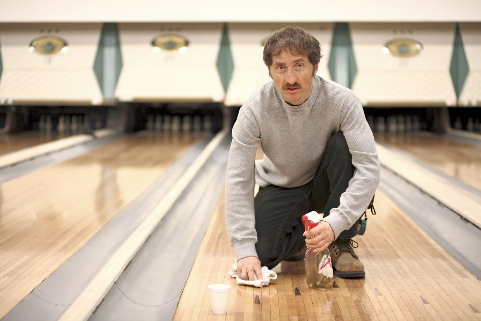
EMMANUEL BILODEAU IN CURLING
Overprotective dad and a pileup of corpses
In Denis Côté's miserabilist mock-thriller a French Canadian bowling alley handyman develops increasing mental problems while keeping his 15-year-old daughter out of school and away from much contact with the outside world. An opening scene shows she hasn't even had her eyes examined before. With glasses, she wanders out one day and comes upon a pile of frozen corpses. Later her dad hides a corpse himself -- that of a neighbor boy he finds dying by the highway -- in an abandoned motel where he used to work. Emmanuel Bilodeau plays the borderline-autistic dad Jean-Francois, and his real life daughter Philomène plays Jean-François' daughter, Julyvonne. The names may be fun, but the action decidedly isn't in this feature, the director's fourth, which has little to recommend it other than a Beckettian alienation, without the eloquence.
Curling takes place, we're told, in a "rural Quebec town," but we see only desolate settlements. The bowling alley, where Jean-Francois Sauvageau, the man with the mustache and the the Aznavour stare, cleans up; a deserted motel called "Mistral" where he also cleans up, until its owners shut it down; his own house, where he keeps his 15-year-old daughter Julyvonne a virtual prisoner; and thin strips of wind-and-snow swept highway in between. The father-daughter acting collaboration isn't a very fruitful one: the two Bilodeaus have little chemistry or presence; both maintain sad-sack stares. A visit to wife and mother Rosie (Johanne Haberlin) in prison leads to an outburst. Rosie knows Jean-François is keeping the girl isolated and declares with fury that she's "borderline retarded" and that threatens that she'll get revenge for this wrongdoing when she gets out.
Left all day by herself, Julyvonne seems strangely content with sitting outside staring into space. When she finds the group of frozen corpses, she runs from them at first, but then goes back in the daytime to join them now and then. They might represent the evil outside world her father has tried in vain to shield her from, but for her in an odd way for her they represent life, the existence of other people. Côté doesn't really do anything but drop vague hints as to what anything may mean. When Jean-François hides the little boy's corpse, it's apparently because he doesn't want to deal with cops. Since the motel lady also says not to call the cops when he finds puddles of blood on the bed and floor of a room recently vacated by a trucker, Jean-François emerges as only marginally odder or more secretive than the other rural characters in Côté's oddball world.
"Fun" (the Canadian French word for, in fact, fun) is offered by the bowling alley boss, who brings in a bright-haired goth girl to mind the snack bar, and by Jean-François' former motel employers, who take him to a commercial location where people play the Canadian variation of the game of curling -- where big polished granite stones are slid over ice in a competition that combines aspects of bowls, boule and shuffleboard. Jean-François takes his daughter, eventually, to these activities. After he hides the boy's body, he has a mental meltdown, though, and goes off in his car leaving his daughter to her own devices. A brief encounter with a rural call girl seems to soften him up, however, and as the film ends he calls Julyvonne, declaring love and affection, and returns to her again.
In constructing his bleak tale, which is not enlivened by music (save a few CD's played for Julyvonne as rewards for being good) or by any humor, Côté has provided some of the trappings of a murder mystery, namely the group of adult corpses the girl finds -- and for all we know the boy might be victim of the same feud or gang fight. He has also created an emotional crisis in his protagonist. However both of these are red herrings. The emotional crisis is deflated, or turned around. The bodies -- well, the cops are coming, but it's a while till spring thaw time. Côté is intentionally careless in spinning his yarn.
Shown at Locarno in compettion, the film won the Best Director prize there. Seen and reviewed as part of New Directors/New Films presented March 23-April 4, 2011 by the Film Society of Lincoln Center and MoMA, New York. In French-Canadian dialect. 92min. In 35mm.
ND/NF screening times:
Sat Mar 26: 6:15 pm - MoMA
Sun Mar 27: 3:30 pm - FSLC |
Last edited by Chris Knipp; 03-15-2011 at 09:27 PM.
-
Dee Rees: Pariah (2011)
Dee Rees: Pariah (2011)
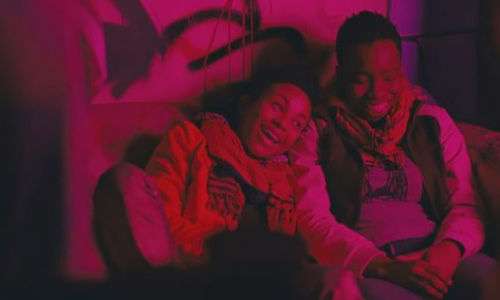
AASSHA DAVIS AND ADEPERO ODUYE IN PARIAH
Gay soul sister comes of age
"If Aliki, a sassy 17-year-old New Yorker, knows anything it’s that she’s gay and she badly wants a girlfriend," the blurb of this movie starts out. "However, there’s a problem— her middle-class Brooklyn family," her macho dad and her religious mom.
Dee Rees' semi-autobiographical first film is a young black lesbian's breezy, fast-moving New York coming-of-age story. This is a brightly colored, appealing, ultimately upbeat little film that fills a welcome niche. There are plenty of white male gay coming of age films (two of the best of them Edge of Seventeen and Get Real), but the LGBT audience has not had many about black girls who considered suicide when a girlfriend was enuf. Actually Aliki, who most people call Li, is too strong a girl to consider suicide.
The word "pariah" is a bit misleading. At school, Alika's orientation is perfectly cool. In fact when some fine young ladies talk about her, it turns out one of them finds her attractive. And she changes into butch attire that she wears at school, and switches back into earrings and combed out hair and takes off the baseball cap when she returns home.
As the story begins, Aliki (a very convincing and warm Adepero Oduye), is a 17-year-old who gets taken to lesbian clubs by her older butch best girl friend Laura (Pernell Walker). Aliki does dearly want to find a girlfriend to give her her first girl-to-girl kiss and become her first lover. But she's too bashful and uncomfortable with the overt song lyrics she hears and overly role-defined styles on display at the clubs to seek that girlfriend there. Meanwhile at school -- the camera using indirection to show her eavesdropping as well as switching outfits -- Li sees the delicious girls who might be interested -- and also might not be the kind you meet at clubs. Meanwhile her uptight, over-stressed mother Audrey (Kim Wayans) is buying her feminine sweaters and complaining about the way she dresses. Obviously Audrey knows what is going on, but just can't accept it.
In the course of the movie Aliki experiences heartbreak both at home and out -- and comes out at home with the usual difficulty. Audrey objects to the dyke-like Laura in no uncertain terms. She turns her away rudely when she comes to the door. Instead she foists a classmate whose mother she works with on Aliki as someone to walk to and from school with. This is Bina (Aasha Davis), who turns out to know where Aliki's coming from. But when Bina kisses Aliki, she jumps away at first. Later Li has a night to remember with her new friend -- only to be rejected the next morning and told it was only playing around. Li runs to Laura -- who was hurt by being left out of the loop and rebuffs her. Meanwhile Li's mom and her cop dad Arthur (Charles Parnell) are constantly fighting. Arthur's pretense of working double-time is beginning to be an obvious cover for a double life. Aliki's only solution is to escape from home, and she gets early college admission on the West Coast through her writing talents -- the usual bittersweet happy ending of coming of age tales.
Rees does not entirely steer clear of cliche or of routine exposition; this may have been a little too self-consciously a Sundance Workshop project at times. There are some unnecessary or too-generic student-teacher moments, there's a bit too much of the fighting parents, and the hand-held camera swings back and forth a bit too much in closeups of conversations. But the look of the film is still a pleasure, especially the color filters for several key moments, through Bradford Young's rich use of 35mm and the costuming, ranging from Laura's and Li's butch outfits to the stylish many-colored gear worn by Bina that expands Aliki's world into something more expressive and gender-complex. Beyond the warm, lively look, above all the scenes of the young women are acted with refreshing naturalness. Cornell grad Odepero Oduye has been hailed as a breakout star.
Debuted at Sundance January 2011, Pariah has been picked up by Focus Features. Seen and reviewed as part of the New Directors/New Films series presented from March 23 through April 4, 2011 by MoMA and the Film Society of Lincoln Center, New York.
ND/NF showtimes and locations:
Sat Mar 26: 8:00 pm FSLC
Mon Mar 28: 9:00 pm - MoMA
Last edited by Chris Knipp; 03-15-2011 at 09:52 PM.
-
P. David Ebersole: Hit So Hard (2011)
P. David Ebersole: Hit So Hard (2011)
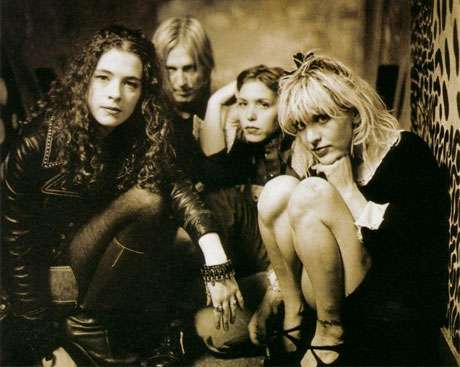
AUF DER MAUR, ERLANDSON, SCHEMEL, AND LOVE IN HOLE'S HEYDAY
A rock musician felled by drugs who recovered
The Seattle grunge look came from the style of butch lesbians. That's one of the nuggets we get from P. David Ebersole's rocumentary Hit So Hard: The Life and Near-Death Story of Drummer Patty Schemel. Schemel was the drummer for Courtney Love's group Hole from 1992 until 1998, replacing the original drummer, Caroline, Rue but then herself had to be replaced. Love declares that for her Patty will always be Hole's drummer. But in fact the feisty, good-humored but sensitive lesbian drummer was downed by drugs, left the band over a recording issue, and for a while was living on the streets of LA addicted to crack. Today Patty Schemel has been clean and sober for six years, is married to a woman and raises a child with her, and has her own dog day-care center, while giving serious drum instruction to young girls. Schemel isn't one of the rock giants people go out to see movies about. But Ebersole and Schemel do tell a hopeful story -- about someone who did not die of an overdose or some other kind of rock suicide but has lived to tell the tale with spirit and a sense of humor. And this movie incidentally takes us back to some intimate moments in the world of Seattle rock's most celebrated casualty, Kurt Cobain.
Patty shared an apartment in LA with Cobain and Courtney Love shortly after the birth of their baby daughter, Frances, and not long before Cobain's suicide. She has provided a wealth of video footage of Cobain, Love, and touring with Hole. The unpublished Kurt Cobain footage is the most newsworthy part of the film. It was an effort to preserve that footage and Schemel's show of skill as a raconteur while film was being re-recorded that decided Ebersole to make a movie all about the drummer and her context. Over a dozen major talking heads contribute to the portrait besides Patty Schemel herself, but most important among these are Patty's mother, Terry; her brother, Larry; Courtney Love, the leader of Hole; Melissa auf der Maur, who was bassist for Hole for five years; and Hole's co-founder, Eric Erlandson.
Schemel grew up in Marysville, a farm town outside of Seattle. At 15 she formed her first band. She worked her way up through high school-era bands, playing with her brother Larry. Many picturesque fliers for her early aggregations are displayed onscreen. Eventually she entered into the world of grunge royalty, when she was considered to replace the departed drummer of Nirvana and became a close friend of Curt Cobain. She was always drinking, and drugs of all kinds, notably heroin, were rife on the Seattle scene. The Pacific Northwest was a pretty druggy place, and the Nineties were a time of "heroin chic." Patty realized that neither heroin nor alcohol gibe with keeping a hard beat. It was her job to provide her band's structure, its backbone. She cleaned up her act and stopped performing high. It was Courtney Love whose wild onstage behavior constantly caused disruption at concerts. But a recording session with producer Michael Beinhorn proved Patty's downfall. Beinhorn was known for undermining and replacing drummers for his dates. He set things up so that Patty failed, and after a couple weeks of exhausting solo recording sessions, he pushed her out and brought in a man with an Italian name who duplicated all her performances. She felt so humiliated by this experience that she went back to drugs and alcohol with a vengeance and withdrew from the band and from everybody. Eventually she wound up living with a shopping cart on the corner of Temple and Alvarado streets in LA. Patty's account of her descent into hell is vivid and good humored.
The film focuses on the idea of women drummers and on Schemel's sexual orientation, and also on her drug problems and subsequent clean life. It doesn't recount her musical career since she left Hole. You can find more about those details in a discussion of the film in the blog Jestherent.
Ebersole has said he used the Maysle brothers as his model in working with a bare minimum team so the interviews would be more relaxed. Hit So Hard is a well-made documentary that tells its story forcefully and clearly, but it will not interest everybody. Likely to be entertained are fans of Seattle rock, Cobain, Hole, Courtney Love, and anyone interested in a musician who overcame the ravages of drugs, or in female drummers. This is also peripherally the portrait of an American generation that grew up from Reagan to Bush I and a dark time when within two months of 1994 Kurt Cobain committed suicide and Hole bassist Kristen Pfaff died of an overdose of heroin. The film significance of the band and the generation is well discussed in Cindy Widener's piece about the film for The Austin Chronicle in connection with its SXSF screenings.
Seen and reviewed as part of New Directors/New Films, presented from March 23-April 4, 2011 by MoMA and the Film Society of Lincoln Center, New York. The film was shown March 15 and 18 at the SXSF festival, Austin, Texas.
ND/NF screening times:
2011-03-28 | 6:00 PM | MoMA
2011-03-30 | 9:00 PM | FSLC
June 2011: Hit So Hard was included in Frameline35, the LGBT film series in San Francisco. Poster image from Michael Hawley's Documentary Capsule Reviews on Michael Guillen's film blog The Evening Class.
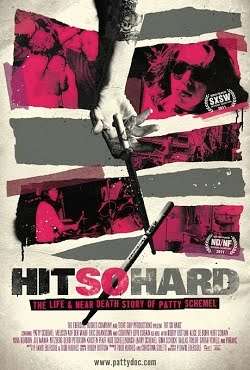
Last edited by Chris Knipp; 06-23-2011 at 11:56 AM.
-
Rebecca Zlotowski: Belle Épine (2010)
Rebecca Zlotowski: Belle Épine (2010)
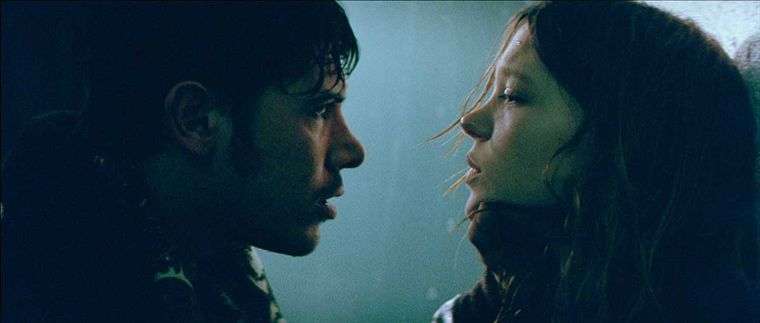
JOHAN LIBÉREAU AND LÉA SEYDOUX IN LA BELLE ÉPINE
Nice girl seeks leather boys
The director Maurice Pialat has often been mentioned in connection with the dark, intense style of French girls' coming-of-age story Belle Épine by first-time director Rebecca Zlotowski. This nice Jewish girl whose mother has just died and whose father has gone to Canada to look into property issues is taking walks on the wild side from the first frames, where Prudence Friedmann (Léa Seydoux) is shown stripping with another girl who has also been caught shoplifting at a store, Marylene (Agathe Schlenker). Prudence refuses to grieve. She seems dead set on disproving her name and in the middle of the night she's dragging Marylene out to the periphery to join leather bikers risking their lives on motorcycles at Rungis in illegal races. Zlotowski's film takes us on a rambling, rapid journey full of shocks and contrasts -- a journey that, alas, rambles too much sometimes to keep us engaged in its action or even sometimes clear what's going on. The ambiance is often wonderful, and it's good to see a coming-of-age story about a girl that's so fraught with danger and risk. There are scenes whose howling music and dark desperation have an edge and energy rarely felt since Patrice Chéreau's 1983 L'Homme Blessé. But Zlotowski and her collaborating writer Gaelle Mace needed to construct a screenplay with more of a shape to it. A nice final scene in which Prudence begins to come to terms with a phantom of her mother almost saves things.
A member of a French movie royal family, since she's the granddaughter and grandniece of the directors of Pathé and Gaumont, Seydoux is a rising star in her own right who has been seen in movies as different as Le Belle Personne, Robin Hood, Lourdes and Inglourious Basterds. Her performance here is intense and defiantly unglamorous, though hardly unsexy, since both she and Demoustier appear bare-breasted early on. She loses her virginity to Franck, a boy from the Rungis circuit whose mother runs a small hotel and whose own job involves cleaning fish. As Franck, Johan Libéreau (Cold Showers, The Witnesses) is, like Seydoux, de-prettified for his role.
All this wild stuff is in contrast to the bourgeois Jewish life exemplified by Prudence's friend Sonia Cohen (Anais Demoustier), whose home Prudence goes to for a dinner that turns out to be a religious evening when the meaning of Rosh Hashanah and Yom Kippur are explained to her.
Back to contrast again, Prudence invites her wild-side pals to come to the family apartment -- her dad's still away -- and trash it. Most of the scenes in the film take place at night (or indoors) and (except for Rungis, seen only as a dark place of shiny roaring motorcycles) in unspecified locations. Eventually the death of someone she knows in the illegal bike racing circuit jolts Prudence back to an awareness of her own recent loss. Moments here are compelling, and Seydoux gives a good performance, but the action doesn't come together; Bell Épine seems a bit of a waste. It's atmospheric, edgily exciting, well shot, and stars several of the poutiest, sexiest young female stars in French cinema. But when you consider Chéreau's L'Homme Blessé, and why it has far greater power, apart from the greater ease of having a young man rather than a girl take a run on the wild side for their coming-of-age, and the stunning obsessive drive of Jean-Hugues Anglade's debut performance, you have the fact that the main characters are locked into a death grip with each other. In contrast the main characters of Belle Épine rarely seem truly engaged. The film is on a search; it never finds itself. Besides an attractive cast it has great music (by Rob) and atmospheric images (by George Lechaptois) -- and a theme worthy of treatment.
Le Belle Épine opened in Paris November 10, 2010, when it received some dissatisfied reviews ("moody and disjointed," "terribly boring"), but also some very favorable ones from good sources, like Les Inrockuptibles, which approved the film's willingness to go "beyond social realism" and "affirm the power of fantasy and of fiction" -- a valid point. They may have been welcoming qualities the film promises. The public was less favorable in its ratings. Zlowkowski, a graduate of the elite École Normale Supérieure, is only 31; she's made a promising first film and is a new director to watch. This film was reviewed earlier on Filmleaf by Howard Schumann.
This film was part of Critics' Week at Cannes last year. Seen and reviewed as part of New Directors/New Films presented March 23-April 4, 2011 by MoMA and the Film Society of Lincoln Center.
ND/NF sceenings:
2011-03-24 | 6:00 PM | FSLC
2011-03-26 | 1:00 PM | MoMA
Last edited by Chris Knipp; 05-18-2013 at 02:12 PM.
-
Ahmad Abdalla: Microphone (2010)
Ahmad Abdalla: Microphone (2010)
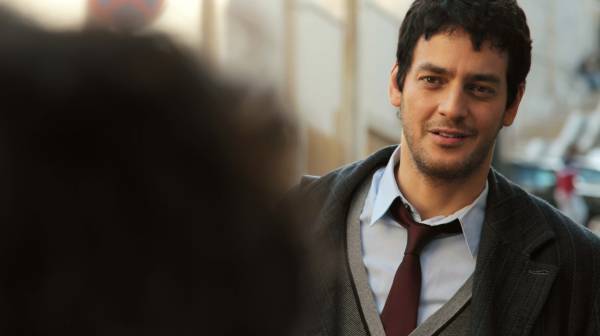
KHALED ABOL NAGA IN MICROPHONE
An Alexandrian expatriate finds a mélange of new arts in bloom
Everything Egyptian tends to look a bit different since the youth revolution of 25 January. So it is with this collective, multi-voice film from last year about the arts in contemporary Alexandria, the sunny, breezy port city north of Cairo. Anchored somewhat vaguely by the handsome, Mastroianni-lookalike Khaled (Cairo media personality Khaled Abol Naga ), an expatriate returning to his native Alexandria after seven years in the States, the film depicts a multiplicity of musical, rap, and hip hop artists and bands living under the radar in the city. Special credit is due to film editor Hisham Saqr for interweaving various threads in ways that are seamless and sometimes very telling. The storyline is too slight to make for a fully coherent film, but there is much life here, and certainly a different world from those whose idea of Egyptian arts is Yousuf Shaheen and Umm Kulsoum.
The wryest scenes, post revolution, are those that feature a self-important government cultural official called Saleh (Khaled pointedly can never quite remember his name), who sees music groups in his office and lays down the law about what they can or can't do if they want to be included in a sanctioned show or receive state funds. In the end he takes away whatever he has offered, all the while babbling about "democracy" and "freedom of expression" -- and finally admits that the big prize is going to go not to the best singing group we hear but to an unseen woman who does covers of Umm Kulsoum songs. For a brief moment, a particularly angry rap group actually chants about revolt, as images -- pale ones, as if a fantasy -- of an actual street demonstration are shown. That was then. Even if there still won't be funds, "freedom of expression" is not an empty phrase in Egypt now. The Salehs of the country are no longer in charge of stifling Egyptian cultural innovation.
While Khaled is looking for new music or rap groups (Masser Egbari, Mascara,and Y-crew are three that he finds), he's being filmed by a couple of lovebirds (who break up midway) pursuing a degree in film at a Jesuit college. In a parody of academic dead-ends, another film student's thesis project is simply talking into the camera, and he can't get started. One rap group's member works at a fish market where he symbolically rescues a fish that has miraculously stayed alive for hours out of water. Another rap band member is held prisoner by his family because they think he's stolen his mother's gold jewelry. He jumps off the balcony and is rescued by friends waiting with a big Egyptian festival tent to catch him. Several groups gather with sound equipment in a square and begin performing to a small audience -- but are gently nudged to move on by cops. Also omnipresent is Naseer, a long-haired young skateboarder who probably should be in school, but is another contact for Khaled for the music and graffiti underground. He and the soon to be lovelorn student filmmaker show that young Egyptian males can be as longhaired and inarticulate as any westerners. In yet another little subplot, a man is selling pirated recordings in front of a big political poster.
On the personal side, Khaled meets with his old girlfriend Hadeer (Menna Shalabi), who while he was pining for her and planning to come home, was longing to leave, and she's now going to London to get a Ph.D. Her message is a familiar one of Egyptian films. She feels that in the liberal West everyone can live in their own world. In Egypt, she feels, there is only one world hat everybody has to live in. She finds Egypt stifling and has had enough. He had only wanted to get back together with her. He smiles with that charming sadness he has as if to say, "How could this not be enough?" Since he's back everything has changed. To begin with, his relationship with his father has deteriorated. He stays with an uncle, who seems depressed till the escaped rapper takes refuge with them and he perks up.
The shifts from scene to scene are seamless and rhythmic, and nearly always herald a new sound and a new group, including several pop-folksingers (western style, but in Arabic), a woman's group that wants to wear masks and insists on singing in English (not acceptable to the government cultural official Saleh), an accordionist who plays in evocation of Umm Kulsoum's songs of the mid-Sixties, and more. In some ways Microphone reminds one of Fatih Akin's 2005 Crossing the Bridge: The Sound of Istanbul, which is a chronicle of many styles practiced in the city, notably rock, Turkish style. But Abdallah opts out of thoroughly spotlighting and identifying individual groups and styles in favor of conveying an "underground" music scene that comes across as energetic but surreptitious, in need organization and performing venues.
It thus becomes Khaled's aim to set up a studio or foundation for the unknown groups and performers. However when the government official withdraws any offer of either a venue or funds, Khaled moves to the idea of a sidewalk cafe. Then even that is withdrawn when (in a hint of Islamic repression) men say the street is their open-air mosque, and can't be used for music. Finally a scattering of the musicians moves down to the sea, where graffiti on the rocks symbolize underground expression -- and provide the closing credits. We have not particularly gotten anywhere. But we've moved with Khaled toward enthusiasm for a world of new more contemporary (if less distinctly Egyptian) performing arts.
Egypt, 120 min. In Egyptian Arabic. Hisham Saqr won a well-deserved best editing prize at Dubai for this film, which was also shown at Toronto, London, and other festivals. Seen and reviewed as part of the New Directors/New Films series presented March 23-April 4, 2011 by MoMA and the Film Society of Lincoln Center, NYC.
ND/NF screenings:
2011-03-29 | 8:30 PM | MoMA
2011-03-31 | 6:00 PM | FSLC

POSTER FROM ABOL NAGA'S BLOG: "In every street of my country
the voice of freedom is calling" (revolutionary song) -- "THE REVOLUTION OF 25 JANUARY"
Last edited by Chris Knipp; 08-05-2014 at 11:05 PM.
-
Paddy Considine: Tyrannosaur (2010)
Paddy Considine: Tyrannosaur (2010)

PETER MULLAN IN TYRANNOSAUR
The actor Paddy Considine produces a powerful writing-directing debut
In Tyrannosaur, the relatively young but well-established actor Paddy Considine (he's 37) directs a group of superb British thespians in a searing drama about a rageoholic widower in the town of Leeds. Basing his protagonists on unspecified but intimate experiences, and aspects of his own mother in the dead wife, Considine has written a film that's intense, brutal, and compelling. It takes us to the deep end of violence and cruelty but leads us through to a sense of redemption. A gray, grizzled, lonely, angry pub denizen widower, Joseph (Scot Peter Mullan, a scary life-force with both violent and sensitive sides) displays nothing but drinking-fueled violence in the early scenes of the film, in which he beats his own dog to death, smashes the window of a bank, and assaults three rowdy youths in a pub when we're barely past the credits. He runs into a charity shop to hide from the youths, and it's here he meets Hannah (Olivia Colman, complex and heartrending), with whom he will be involved throughout the film. Considine strains the audience's ability to stomach violence and ugliness, but hardly strains our credulity. He has made what is very close to a great film.
When Joseph hides behind a rack of clothes in the shop, Hannah calms him and prays for him. He begins things on an honest basis with her, declaring, "My best friend's dying of cancer. I killed my dog. I'm fucked." Visits to his friend and a funeral punctuate the action and add perspective. The next day in a desperate emotional state Joseph returns to the shop again, but is abusive and nasty about Hannah's religiosity and what she later ironically calls her "cozy" life in the Manors housing estates. Now the film's point of view shifts to Hannah. We learn she too drinks whenever the bus takes her home to her suburban house. First it may seem this is to deal with the violent emotions she has absorbed from Joseph, but it soon emerges that she lives in a horribly abusive relationship with her jealous, cruel and desperately unhappy husband James (Eddie Marsan), whose return home is anything but a pleasure. There's a surprising role-reversal that gradually develops between Joseph and Hannah.
James' behavior makes Joseph's violence seem simpler. He urinates on Hannah for falling asleep on the sofa before he gets home, and other cruelties she reveals later that prevented her from childbearing are disgusting (and some of her experiences may strain credulity). James's mood swings are scary while Joseph seems his own worst enemy but not entirely a bad man. For one thing he has one warm relationship with a kid across the street (Samuel Bottomley) who must live with his irresponsible mother (Sian Breckin) and her aggressive punk boyfriend (Paul Popplewell ) but maintains good humor and friendliness toward Joseph. There's some humor if of an insensitive kind too in Joseph's explanation to Hannah of how "Tyrannosaur" came to be his nickname for his overweight diabetic wife, but the word suggests that part of him is a prehistoric raging animal. The film's final scene offers hope for both Hannah and Joseph.
Considine seems just to be establishing character and situation halfway through the film, but when Hannah and Joseph seem equally at risk of violence, inflicted on self or by others, events become tense and suspenseful, and desperate though the characters are, we care about them and wonder what will happen between Hannah and Joseph when she leaves James for the drunken widower as the safer bet. Semi-comical rants from Joseph's scraggly-haired drinking partner Tommy (Ned Dennehy) add flourishes, and the death of Joseph's friend and his funeral, with family and Hannah, now very battered and taking refuge with Joseph, provide a temporary pause before final revelations. Considine is as strong in the plotting as in the character areas, and his choice and directing of actors can't be faulted.
There is intensity and bitter truth in Considine, who steers clear of the edge of wild fantasy one finds in the Irishman Martin McDonagh. His harshness verges on the crude. But considering how well all the elements are managed here, Considine has produced a very impressive debut. He knows how to grab you and hold you all the way through. If you're looking at your watch, it's just because you're terrified. Brutal and ugly this world may be, but Considine seems to know it and love it enough to show its truth and humanity. The accomplishment here is to give us lives that seem broken and hopeless and then hold our sympathy and offer a chance of a new beginning that's far from soft and easy. Erik Alexander Wilson's images, which for a welcome change are not distractingly jerky and hand-held, have a kind of limpid clarity, and there are some songs at the funeral that are almost too rich and pretty. Peter Mullan is also a director. He and Eddie Marsan figure in the dark, intense Red Riding trilogy, as does Paddy Considine. Considine is known for his beginning with Shane Meadows, and has significant Hollywood acting credits. His 2007 Bafta-winning short, Dog Altogether, presented Mullan and Colman in the same roles, differently developed.
UK, 91 min. Tyrannosaur had its US debut at Sundance where it won acting awards for Colman and Mullan and a directing award for Considine. A Strand Films US theatrical release is scheduled for October 11, 2011. Seen and reviewed as part of the New Directors/New Films series presented from March 23 to April 4, 2011 by the Film Society of Lincoln Center and MoMA, NYC.
ND/NF screenings:
2011-03-30 | 6:00 PM | MoMA
2011-03-31 | 9:00 PM | FSLC
Last edited by Chris Knipp; 10-05-2011 at 07:03 AM.
 Posting Permissions
Posting Permissions
- You may not post new threads
- You may not post replies
- You may not post attachments
- You may not edit your posts
-
Forum Rules





 Reply With Quote
Reply With Quote








Bookmarks